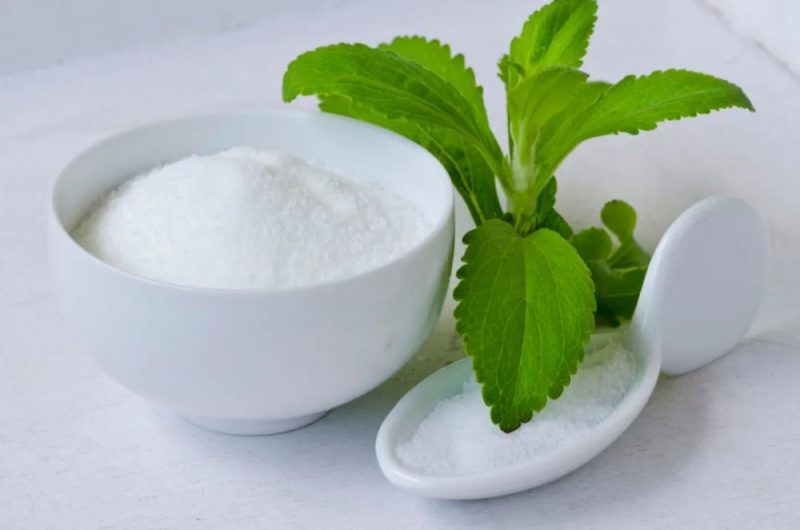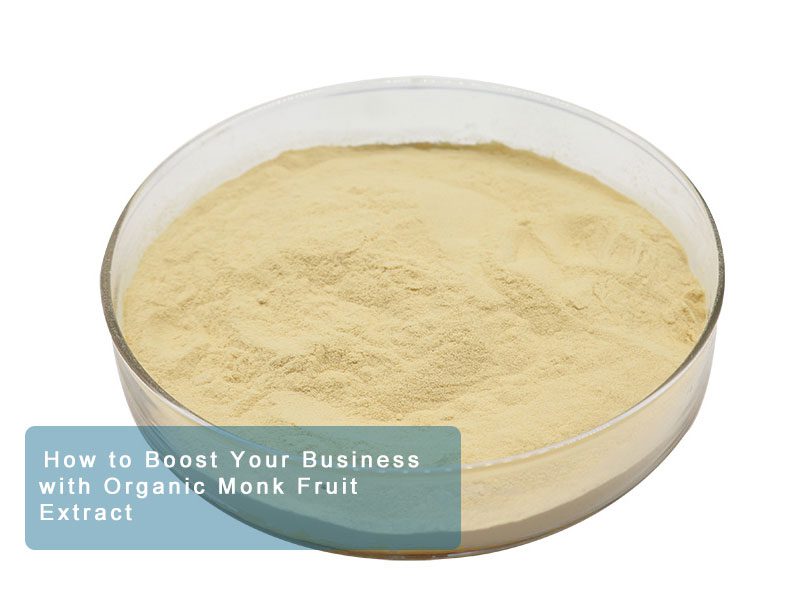Table of Contents
Consumers are more and more aware of the importance of dietary fiber in maintaining a healthy digestive system, so inulin, an easily digestible fiber, is becoming more and more popular. At present, inulin is mainly used in the food and beverage market, especially in the bakery and confectionery sector, followed by dietary supplements.
Although inulin has been added to a variety of foods, and as one of the prebiotics, it is believed to bring many benefits to human health. But what exactly is inulin? What are the benefits? How much should I eat?
Today we will pay attention to inulin together and answer the above questions for you. I hope that this article can bring some help to readers, and once again remind readers that any nutrient supplement should follow the principle of “appropriate amount is beneficial, too much is too late”.
What is inulin?
 If you, like most people, are trying to increase the fiber content in your diet, that’s great, because most people consume only half of the recommended amount of fiber per day.
If you, like most people, are trying to increase the fiber content in your diet, that’s great, because most people consume only half of the recommended amount of fiber per day.
According to market research companies, fiber has become the “new protein.” In order to satisfy consumers’ desires, manufacturers are adding fiber to a variety of foods and beverages, including cereals, energy bars, protein supplements, “healthy” biscuits, low-calorie and low-sugar ice cream, and even bottled water.
Inulin is one of the most popular ingredients to improve fiber. However, many people may not understand this substance called “inulin”.
Inulin is prebiotic, which can be used by microorganisms in the digestive tract and has a positive impact on human health. In this regard, the three common prebiotics are inulin, also known as long-chain inulin; fructooligosaccharide (FOS), short-chain inulin, also known as oligofructose; There is also galactooligosaccharide (GOS). In addition, a series of polysaccharides and oligosaccharides such as xylooligosaccharides and arabinose-oligosaccharides are also considered to have benefits.
Most of inulin and oligofructose are extracted from chicory root fiber. This natural dietary fiber comes from chicory which belongs to the same family as dandelion and can be extracted with hot water. The source of organic inulin is usually the root of Jerusalem artichoke. In addition, whole grains and certain vegetables and fruits such as asparagus, garlic, and bananas also contain small amounts of inulin. Galactooligosaccharides are produced from lactose, which is derived from animals. Compared with the former two, the research on galactooligosaccharides is relatively insufficient.
Long-chain inulin has a creamy taste, so it is often used to reduce the fat content in food. Short-chain inulin (FOS) tastes slightly sweet, so it is used to reduce the content of sugar and sugar substitutes in foods and beverages. Inulin supplements and certain foods and beverages are mixed with short-chain and long-chain inulin. These mixed inulins are also often used in scientific research.
So what benefits can inulin bring us?
Chicory root fiber passes through the small intestine and is fermented by bacteria in the large intestine. Studies have shown that a mixture of short-chain and long-chain inulin can relieve the discomfort of constipation and help defecation. Fiber increases the number of beneficial bifidobacteria and lactobacilli in the intestine.
The EFSA (European Food Safety Association) recognized this, that is, consuming more than 12 grams of inulin or oligofructose per day can relieve constipation.
However, if you take too much or too quickly, it may cause discomfort in the digestive tract such as gas (gas farting)-this is the case with any fiber. Symptoms such as exhaust may affect social interaction, and this stimulation of the intestines may not be beneficial to patients with gastrointestinal diseases, such as patients with irritable bowel syndrome. In addition, some people seem to be more sensitive to inulin and oligofructose than others and may need to limit their intake.
In addition, inulin and oligofructose (FOS) can also reduce calorie intake, lower blood sugar, and promote calcium absorption.
Chicory root fiber seems to slow gastric emptying and suppress appetite signals in the brain, helping you eat less. In a small-scale study, adults and children with normal weight and overweight supplemented with 12 to 16 grams of chicory root fiber daily, and their total calorie intake would be reduced.
A weight-loss study of 44 patients with prediabetes found that under the guidance of a dietitian, a group of people who took inulin supplements lost 7.6% of their body weight after 18 weeks. In contrast, they took another fiber—— The weight of the cellulose group lost 4.9%.
Inulin also seems to reduce postprandial blood glucose and insulin levels in people of average weight and overweight. A study of 49 female patients with type 2 diabetes found that after 8 weeks of experimentation, compared with 10 grams of maltodextrin (a refined carbohydrate), daily intake of 10 grams of inulin can greatly reduce Fasting blood glucose, glycosylated hemoglobin (A1C, used to assess the average three-month blood glucose) and insulin levels.
Although these findings are exciting, to understand whether inulin is beneficial to patients with prediabetes and type 2 diabetes, further research is needed on its effects.
Regarding the issue of calcium absorption, studies have shown that 8 grams of chicory root fiber daily can improve calcium absorption. Chicory root fiber can enhance the acidity of the colon environment, increase the surface area that can absorb nutrients, and produce more protein that can be combined with calcium.
The Children’s Nutrition Research Center of the Ministry of Agriculture, established at Baylor College of Medicine, conducted a one-year randomized controlled trial on 100 adolescents and found that the adolescents who consumed 8 grams of chicory root fiber daily had higher calcium absorption levels, and The bone mineral density is also relatively high, which indicates that the extra absorbed calcium has been deposited in the bones.
Although inulin may have many benefits, as mentioned before, excessive intake may still cause gastrointestinal discomfort. So how much inulin should we take?
How much inulin should be taken?
In prehistoric times, we ate more vegetables and chewed roots than we do now. It is estimated that our ancestors ate about 135 grams of inulin every day. Considering our current level of digestion, this is not recommended as a goal. But we can be more realistic and eat the right amount of inulin to achieve the purpose of promoting health.
According to research, a proper daily intake of inulin can promote the growth of intestinal probiotics Bifidobacterium. If it is to better absorb calcium, you may need more. In addition, scientists have confirmed that a certain amount of inulin and oligofructose (FOS) daily can promote regular bowel movements.
Generally speaking, the extra soluble dietary fiber supplemented by healthy adults can be taken according to the following standards: inulin ≤ 15 g, polyfructose (long-chain inulin) ≤ 8.4 g1.
Regarding oligofructose and pectin, there is no clear recommendation from China’s regulatory or guidance agencies. With reference to previous literature reports, we recommend daily intake of ≤10~15 grams 2~4.
However, it should be noted that everyone’s sensitivity to these fibers is different, so the specific intake may vary from person to person. It is best to consult a nutritionist or doctor to choose the appropriate intake.
When increasing fiber intake, it should be done gradually so that the body can adapt slowly. At the same time, make sure to drink plenty of water to prevent constipation.
Professor Randal Buddington of the University of Tennessee Health Science Center compares increasing inulin intake to increasing exercise.
Randal said: “If a person who is paralyzed on the couch does high-intensity exercises at the beginning of exercise, the pain and torture may make him unable to persist. If he starts with a soothing exercise, slowly increasing the intensity, The benefits will continue to increase, and he will stick to it.”
As mentioned earlier, the tolerance of inulin seems to vary from person to person.
Studies have shown that people’s tolerance to long-chain inulin is higher than to oligofructose (FOS). Most healthy people consume up to 10 grams of inulin and 5 grams of fructooligosaccharides (FOS) a day.
Hannah Holscher is a professor and registered dietitian at the University of Illinois. She recommends increasing intake every two weeks and gradually increasing.
Hannash said: “For example, there is an energy bar you like to eat, and it happens to have a high inulin content, and you are sensitive to inulin, so you can eat a quarter at a time for a week or two. , And then change to eat one-half at a time, and eat for two more weeks, slowly increasing until you can eat one whole piece at a time.”
Also note that, just like energy bars with inulin added, inulin may have been added to many foods you choose. Therefore, if you want to accurately calculate your daily intake of inulin, you may also need to pay attention to food labels.
How to calculate how much has been added?
In recent years, as consumers strongly desire to reduce sugar, increase protein, and support digestive health products, prebiotic fiber inulin is in the sun.
Julian Mellentin, a food and beverage consultant, said: “The fusion of protein, low sugar, and digestive health trends is driving the development of inulin.”
And this rapid growth trend makes Julian feel that 2020 may become the year of inulin.
Moreover, the recent trend of low sugar and low carbohydrates has affected the sales of breakfast cereals, but many brands have found that by using inulin to provide digestive health benefits and low sugar promises, they can win the hearts of more consumers.
For example, food manufacturer Troo Granola uses inulin syrup in its products because it acts as both a prebiotic fiber and a sweetener, while keeping the sugar content low while providing consumers with a more attractive taste.
Therefore, if you observe carefully, you can find that inulin may have been “secretly” added to a variety of foods and beverages. However, food companies do not need to indicate the amount of inulin in the product on the label, but you can still find them in the nutritional content table because inulin is counted in the dietary fiber.
Therefore, if it is a food or beverage that usually does not contain fiber (such as yogurt or fruity water), inulin as an additional additive will become the only fiber component, then the content of dietary fiber can tell you how many grams of chrysanthemum have been added powder.
If the food contains whole grains or other fiber-rich ingredients, such as cereal bars or granola bars (cereal nuts and dried fruits are roasted with honey to golden brown, they are crispy and sweet to eat), then it is difficult to tell how much there is The fiber comes from inulin.
In this case, you can check where inulin appears in the ingredient list (may be listed as inulin, oligofructose, oligofructose-rich inulin, chicory root fiber, chicory root extract, or oligofructose). Because the list of ingredients is sorted by weight, if inulin comes first, it means more added.
Key point: sufficient fiber
Although inulin is good for health as a fiber source and prebiotics, remember that the fiber you get should mainly come from whole foods, because these foods not only supply fiber, but also provide other nutrients. Generally, we should get 25 to 38 grams of fiber from food every day instead of relying on fiber supplements.
Nutritionist Holscher’s suggestion is to cut the complex and keep it simple. The key point is to obtain a sufficient amount of fiber as a whole, without having to worry about getting enough inulin. Incorporating a lot of plant-based foods in your diet will help you get inulin as well as other types of fiber.
If you want to reduce calorie intake or improve calcium absorption, it is recommended that you start with the most basics, and then add foods and beverages or supplements with high inulin content to your daily diet.
To reduce calorie intake, eat more non-starchy vegetables, increase your total fiber intake through beans and small amounts of whole grains, eat lean protein foods, and drink plenty of water.
To better absorb calcium, make sure to take calcium tablets together with vitamin D. Then you can consider whether to include chicory root fiber to improve your diet.
In short, it is important to follow the principle of “appropriate amount is beneficial, and excess is not enough” and supplement fiber and other nutrients in an appropriate amount.

